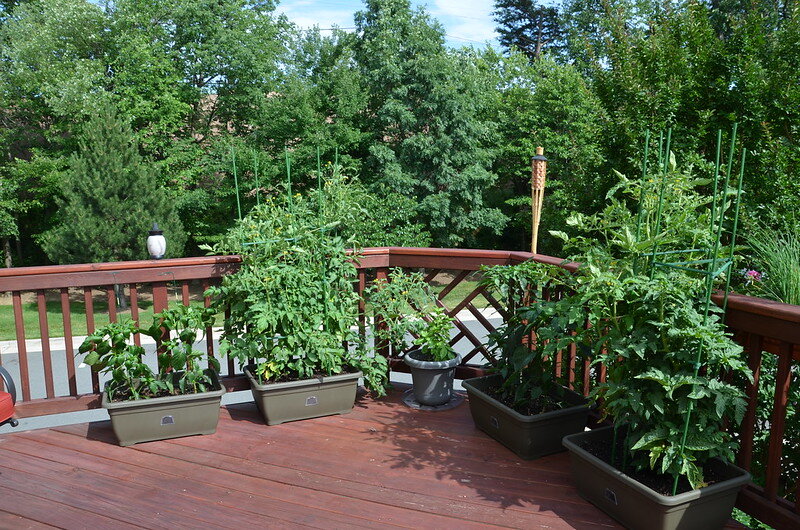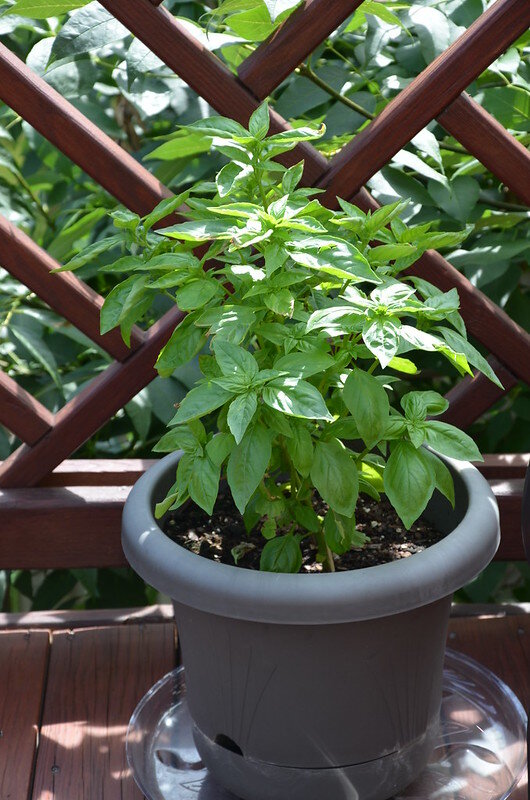by Mark Levisay
Now that you have a better idea of what varieties of tomatoes you want to plant, let’s talk about how to plant them to maximize their growth throughout the summer.
Spacing to minimize disease
Proper spacing of the individual plants is important in minimizing the spread of disease later in the summer. Rows should be at least 3’ apart, with the plants in the rows 2-3’ apart. The idea is to get as much sunlight to the plants and promote air movement to minimize fungal diseases. I use soaker hoses throughout my tomato beds, and it helps to have them laid out in addition to your support stakes or poles before you do any planting.
Tomatoes planted and tied to support poles.
Establish strong roots
If you look closely at your tomato plants you’ll notice lots of little “hairs” on the main stem. These will become roots if they come in contact with the soil, so your goal is to plant your seedlings as deeply as possible for maximum root development. You’ll also notice two small oval leaves, which you want to pinch off.
Bury your seedlings to within about 2” of the first set of leaves. Plant them as close as you can to your support stakes or poles and the soaker hose if you’re using it. Never bury any leaves under the soil as they will rot and cause trouble later. Mulch thoroughly all around the plants to conserve moisture and prevent soil splash onto the leaves. (Important note: The soil splash is one of the ways that fungal spores in the soil can come into contact with the tomato plant.)
Keeping good constant moisture in the soil, without being soggy, is a good way to prevent blossom end rot on the fruit. I use hardwood bark mulch in my tomato bed, but straw works well and you can use newspaper between the plants as well. Water thoroughly after mulching.
Feed plants through the summer
Tomatoes are classified as heavy feeders so it’s important to give them fertilizer of some sort all during the summer. Before I plant, I mix a cup or so of Espoma’s Plant Tone organic fertilizer in the soil where each seedling will go. Mix this in the soil when you dig your hole, and then firm the soil around the plant. You can use a high nitrogen (N) fertilizer at the beginning as you’re trying to promote rapid growth of the new plants.
Once the plants have begun to set lots of green fruit it will be time to add more fertilizer. Use a high nitrogen fertilizer for this application. Two weeks after your first ripe tomatoes, fertilize again, but this time use a fertilizer with a higher phosphorous (P) content, as this helps promote the fruit production. Continue this monthly schedule until fall.
Support plants
I start tying up my tomatoes as soon as they’re tall enough to get the ties around—sometimes even when I plant them. Tomatoes want to grow UP and I think they do better if you help them climb the poles. Tying up also helps prevent damage from storms and high winds. In addition, we want the plant leaves as far from the soil as possible for disease prevention and the ties will help with upward growth.
To make the ties, I use old sheets or pillowcases torn into ½-3/4” strips about 10-12” long and tie them up after every 6-9” of growth. I’ve also learned to put a wood or drywall screw into my poles ½ to 2/3 of the way up from the ground on the opposite side from the plants. Later in the summer when your plants are loaded with fruit they’ll want to sag down and the screws give the ties something to latch on to.
Next time we’ll talk about training, pruning and other cultural practices in the tomato bed.
Have a garden question? Send me an email at marklevisay@gmail.com.




